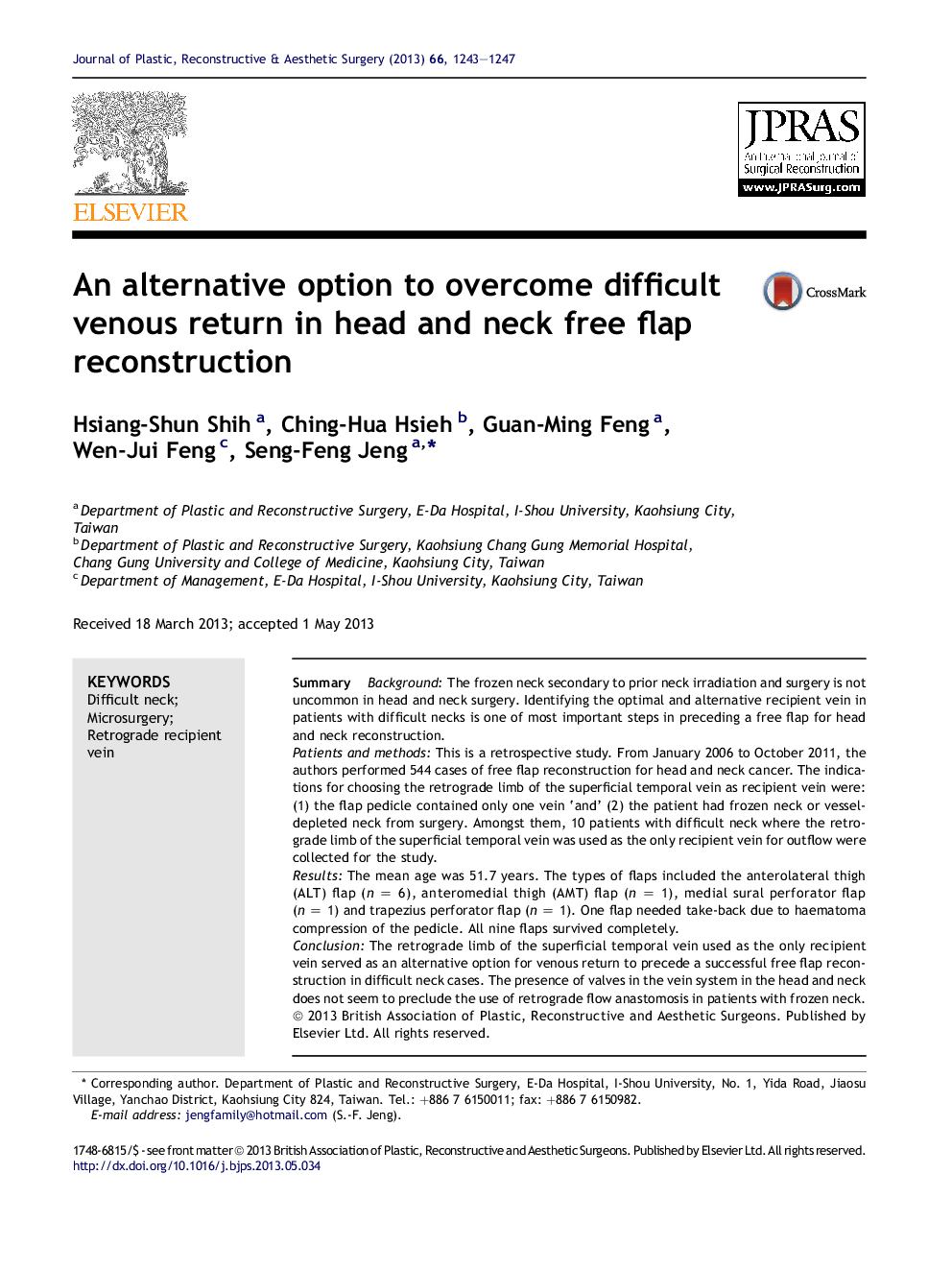| Article ID | Journal | Published Year | Pages | File Type |
|---|---|---|---|---|
| 4118376 | Journal of Plastic, Reconstructive & Aesthetic Surgery | 2013 | 5 Pages |
SummaryBackgroundThe frozen neck secondary to prior neck irradiation and surgery is not uncommon in head and neck surgery. Identifying the optimal and alternative recipient vein in patients with difficult necks is one of most important steps in preceding a free flap for head and neck reconstruction.Patients and methodsThis is a retrospective study. From January 2006 to October 2011, the authors performed 544 cases of free flap reconstruction for head and neck cancer. The indications for choosing the retrograde limb of the superficial temporal vein as recipient vein were: (1) the flap pedicle contained only one vein ‘and’ (2) the patient had frozen neck or vessel-depleted neck from surgery. Amongst them, 10 patients with difficult neck where the retrograde limb of the superficial temporal vein was used as the only recipient vein for outflow were collected for the study.ResultsThe mean age was 51.7 years. The types of flaps included the anterolateral thigh (ALT) flap (n = 6), anteromedial thigh (AMT) flap (n = 1), medial sural perforator flap (n = 1) and trapezius perforator flap (n = 1). One flap needed take-back due to haematoma compression of the pedicle. All nine flaps survived completely.ConclusionThe retrograde limb of the superficial temporal vein used as the only recipient vein served as an alternative option for venous return to precede a successful free flap reconstruction in difficult neck cases. The presence of valves in the vein system in the head and neck does not seem to preclude the use of retrograde flow anastomosis in patients with frozen neck.
